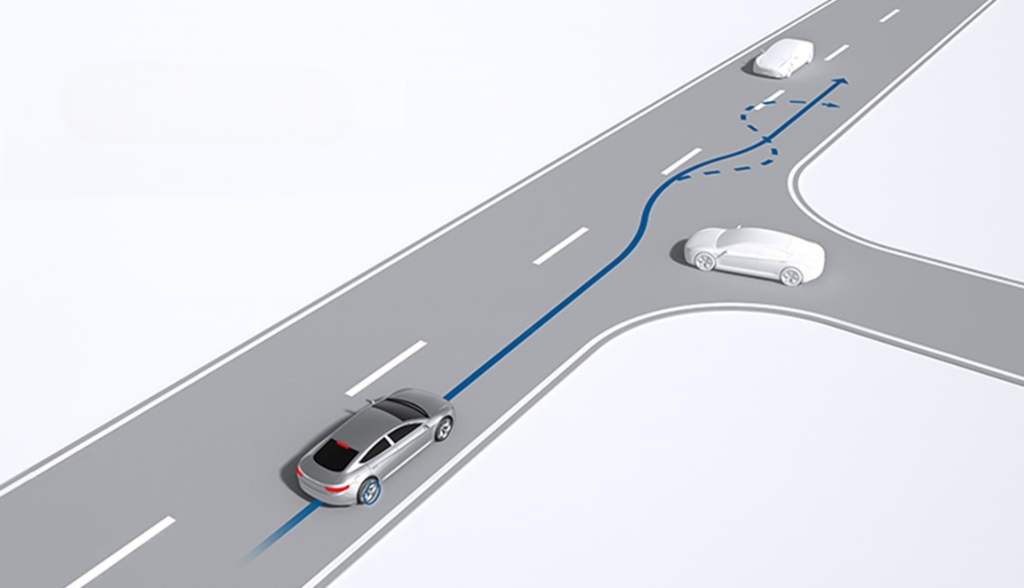What is ESP on a car?
The Electronic Stability Programme (ESP), also known as Electronic Stability Control (ESC), is a crucial safety feature in modern vehicles. It is designed to help drivers maintain control of their cars during extreme steering manoeuvres, such as skidding or swerving. By automatically applying brakes to individual wheels and adjusting engine power, ESP helps prevent accidents caused by loss of vehicle control.
How does ESP work?
The ESP system uses a combination of sensors and control units to monitor the vehicle’s behaviour. Here’s a step-by-step breakdown of its operation:
Sensors: The system includes several sensors, such as wheel speed sensors, steering angle sensors, and yaw rate sensors. These sensors continuously collect data on the vehicle’s speed, steering direction, and lateral movement.
Control Unit: The ESP control unit processes the data from the sensors to determine if the vehicle is moving in the intended direction.
Brake Application: If the system detects that the vehicle is deviating from the driver’s intended path (e.g., understeer or oversteer), it automatically applies the brakes to one or more wheels. This selective braking helps correct the vehicle’s trajectory.
Engine Power Adjustment: In some cases, the ESP system may also reduce engine power to help regain control.
By performing these actions, ESP ensures that the vehicle remains stable and reduces the risk of skidding or rollover accidents.
How important is ESP in a car?
ESP is a vital safety feature that significantly enhances vehicle stability and driver control. Let’s know some of these features:
- Accident Prevention: ESP helps prevent accidents caused by skidding, swerving, or oversteering. Studies have shown that vehicles equipped with ESP are less likely to be involved in single-vehicle crashes.
- Improved Control: ESP provides drivers with better control, especially in adverse conditions such as wet, icy, or slippery roads.
- Enhanced Safety: By preventing loss of control, ESP protects not only the vehicle’s occupants but also other road users.
Due to its proven effectiveness, ESP is now mandatory in many countries for new vehicles.
Is ESP always known as ESP?
No, ESP is not always referred to as ESP. Different manufacturers use various names for their electronic stability control systems, including:
Electronic Stability Control (ESC)
Dynamic Stability Control (DSC)
Vehicle Stability Control (VSC)
AdvanceTrac Dynamic Stability and Traction Control (DSTC)
Despite the different names, the underlying functionality of these systems is similar, aiming to enhance vehicle stability and safety.
What causes the ESP light to come on?
The ESP warning light on your dashboard can illuminate for several reasons:
System Activation: The light may briefly flash when the ESP system is actively working to stabilise the vehicle.
Sensor Issues: Faulty or dirty sensors can trigger the ESP warning light. Common culprits include wheel speed sensors and steering angle sensors.
Malfunction: Any malfunction within the ESP system itself, such as a problem with the control unit or wiring issues, can cause the light to come on.
Low Battery Voltage: A low battery or charging system issue can affect the ESP system’s performance and trigger the warning light.
After Maintenance: Sometimes, the light may come on after maintenance work if the system needs to be reset or if there was an error during the repair process.
If the ESP warning light stays on continuously, it’s essential to have your vehicle inspected by a professional to diagnose and fix the underlying issue.
The Electronic Stability Programme (ESP) is a pivotal advancement in automotive safety technology. By preventing loss of control and reducing the risk of accidents, ESP enhances the driving experience and ensures safer roads. Understanding how ESP works and its importance can help drivers appreciate the critical role it plays in modern vehicles. If your vehicle is equipped with ESP, regular maintenance and prompt attention to warning lights are essential to keeping this life-saving system functioning correctly.
Maruti Suzuki has expanded the availability of its Electronic Stability Program (ESP), making it a standard safety feature across all its variants rather than limiting it to the top-spec trims. This enhancement is not exclusive to the Swift; the Baleno also now comes with ESP as standard. Furthermore, Maruti Suzuki had earlier upgraded the safety features of the S-Presso, along with an updated engine.



